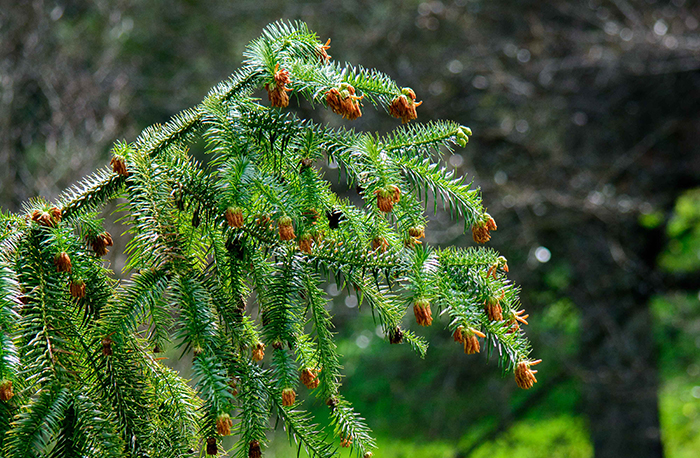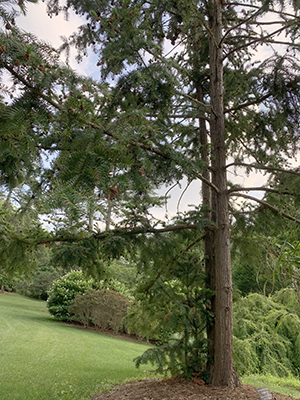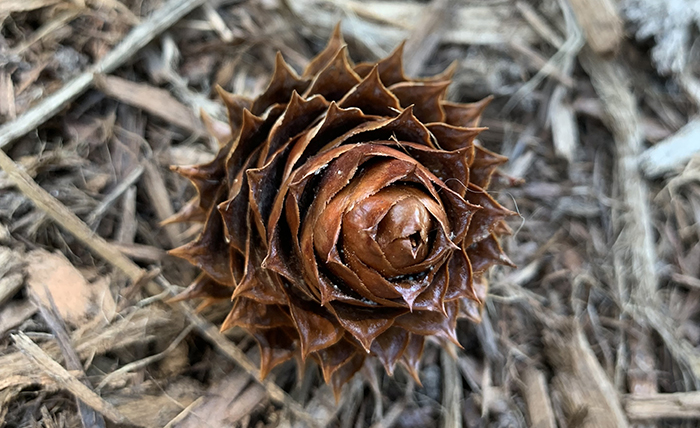Garden Talk

Botanical name: Cunninghamia lanceolata
Common name: China fir
Family name: Cupressaceae (Cypress family)
Native range: Central China
Location in Duke Gardens: Historic Gardens, Culberson Asiatic Arboretum
USDA Hardiness Zones: 7-9
By Katherine Hale
Marketing & Communications Assistant

Driving along North Carolina’s rural back roads, you may spot the unusual-looking China fir (Cunninghamia lanceolata) growing in old homesteads and cemeteries or as a prize specimen tree outside more recently built houses. Although not native to the area, this spiky conifer has become a staple of Southeastern horticulture since its introduction to the United States, as it thrives in the warm, humid climate and compacted clay soils that dominate the area.
The name "China fir" is somewhat misleading, as it is not really a true fir (Abies spp.), and it is more closely related to bald cypresses, coast redwoods and dawn redwoods. It is, however, native to China, where it is widely grown for commercial timber on account of the durability and fragrant scent of its wood.
China fir is easy to identify, thanks to its sharp and prickly needles—lanceolata is derived from the Latin word for "spear"— as well as the clusters of 1- to 3-inch cones clustered at branch tips. Young trees have distinctive pyramidal structure, and they may develop into a more open form with multiple trunks with long pendulous branches as they age, reaching 70 feet or more in height over several decades. Exposure to cold temperatures may turn some or all of the foliage brown in the winter, and it may remain on the tree for some time afterward.
Unlike many introduced species, China fir is extremely well-behaved and rarely naturalizes beyond the original planting. Here at Duke Gardens, there are multiple groves of China fir for visitors to admire and enjoy. Look for the trees adjacent to the Memorial Gate and the Iris Bridge in the Historic Gardens, as well as in the Culberson Asiatic Arboretum.
Photos from top: China fir branches with spiky needles and male pollen cones at the branch tips, by Cathi Bodine; profile of a multi-trunked specimen adjacent to the Iris Bridge in the Historic Gardens ,and close-up of a fallen China fir cone, by Orla Swift.






